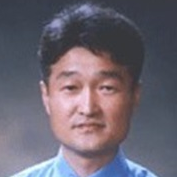Etching Kinetics and Mechanisms of Thin Films
A special issue of Materials (ISSN 1996-1944). This special issue belongs to the section "Manufacturing Processes and Systems".
Deadline for manuscript submissions: closed (30 June 2021) | Viewed by 30264
Special Issue Editors
Interests: plasma etching technology; plasma etching mechanism and modeling; plasma monitoring; etched surface reaction analysis; plasma surface treatment; plasma applications; semiconductor processing technology; energy harvest
Interests: physics and chemistry of low-pressure gas discharge plasmas; plasma modelling and diagnostics; etching kinetics and mechanisms in multi-component gas mixtures; optimization of plasma etching control
Special Issue Information
Dear Colleagues,
We are pleased to announce that submissions are open for this Special Issue of Materials devoted to papers presented at the International Conference on Etching Kinetics and Mechanisms of Thin Films.
The modern trend to increase both device operating speed and density assumes the decrease in critical dimensions of their active elements down to a nanometer scale, and initiates the development of novel vertically stacked device structures using the thin-film structures. The fabrication of such next-generation semiconductor devices requires innovative thin-film patterning techniques which allow one to achieve both highly anisotropic and selective “dry” (plasma-assisted) etching for a wide number of thin films including silicon-based semiconductors, dielectrics, various metals, and their oxides. Obviously, the progress in “dry” etching technology is closely connected with fundamental studies of etching kinetics and mechanisms for the involved materials, which provide an adequate understanding of the impacts of physical and chemical etching pathways on the output process characteristics and thus, on the real device performance.
The main aim of this Special Issue is to extend the knowledge of advanced “dry” etching technology and to match the experimentally based research on etching phenomena with main effects in plasma physics and chemistry. For this purpose, the topics of key interest are: 1) Kinetics and mechanisms of reactive-ion etching processes for silicon-based thin films and various novel materials/etch techniques that are required for next-generation semiconductor device fabrication; and 2) Realistic 3D feature profile simulation for high-aspect-ratio etching techniques.
We invite you to submit high-quality research, technical, or review papers which are focused on emerging etching technologies, kinetics, and mechanisms of both gas-phase and heterogeneous process under reactive-ion etching conditions, contributing to the knowledge of etching techniques, as well as 3D profile simulation to address phenomena that occur during high-aspect-ratio etching.
Some areas of interest for this Special Issue include, but are not limited to: new methods and research on novel etch materials and innovative etch techniques which can achieve highly selective (or highly nonselective)/highly anisotropic (or highly isotropic) etching of various semiconductor materials; environmentally benign etch materials that do not increase the greenhouse effect; realistic 3D etching profiles for next-generation high-aspect-ratio etching processes including real-time in-site monitoring technology to manage tight process margins; basic experimental and theoretical research for nanoscale phenomena such as profile bowing and distortion; novel plasma chemistry to overcome the limitations of conventional plasma chemistry; plasma monitoring technology for plasma etching, etc.
If you need any further information about this Special Issue, please do not hesitate to contact us.
Prof. Dr. Kwang-Ho Kwon
Prof. Dr. Alexander M. Efremov
Prof. Dr. Yeon Ho Im
Guest Editors
Manuscript Submission Information
Manuscripts should be submitted online at www.mdpi.com by registering and logging in to this website. Once you are registered, click here to go to the submission form. Manuscripts can be submitted until the deadline. All submissions that pass pre-check are peer-reviewed. Accepted papers will be published continuously in the journal (as soon as accepted) and will be listed together on the special issue website. Research articles, review articles as well as short communications are invited. For planned papers, a title and short abstract (about 100 words) can be sent to the Editorial Office for announcement on this website.
Submitted manuscripts should not have been published previously, nor be under consideration for publication elsewhere (except conference proceedings papers). All manuscripts are thoroughly refereed through a single-blind peer-review process. A guide for authors and other relevant information for submission of manuscripts is available on the Instructions for Authors page. Materials is an international peer-reviewed open access semimonthly journal published by MDPI.
Please visit the Instructions for Authors page before submitting a manuscript. The Article Processing Charge (APC) for publication in this open access journal is 2600 CHF (Swiss Francs). Submitted papers should be well formatted and use good English. Authors may use MDPI's English editing service prior to publication or during author revisions.
Keywords
- Plasma etching
- Plasma process modelling & simulation
- Plasma monitoring and diagnostics
- Plasma bulk & surface chemistry
- Etching mechanism
- Surface process kinetics
- Novel etch materials
- Innovative etch techniques
Benefits of Publishing in a Special Issue
- Ease of navigation: Grouping papers by topic helps scholars navigate broad scope journals more efficiently.
- Greater discoverability: Special Issues support the reach and impact of scientific research. Articles in Special Issues are more discoverable and cited more frequently.
- Expansion of research network: Special Issues facilitate connections among authors, fostering scientific collaborations.
- External promotion: Articles in Special Issues are often promoted through the journal's social media, increasing their visibility.
- e-Book format: Special Issues with more than 10 articles can be published as dedicated e-books, ensuring wide and rapid dissemination.
Further information on MDPI's Special Issue polices can be found here.








